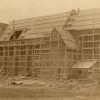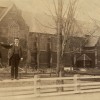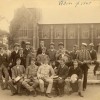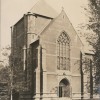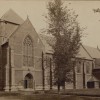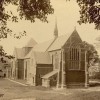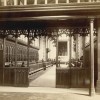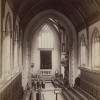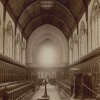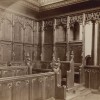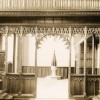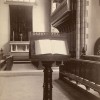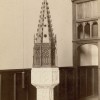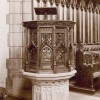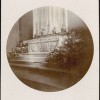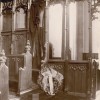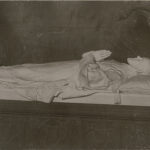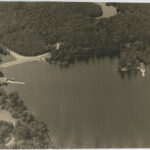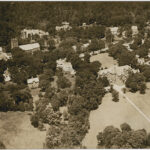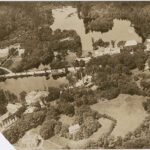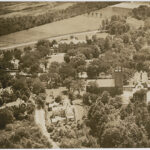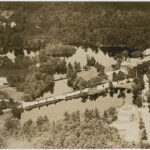A New Chapel for St. Paul’s School: Early Photographs of the Chapel of St. Peter and St. Paul
Introduction:
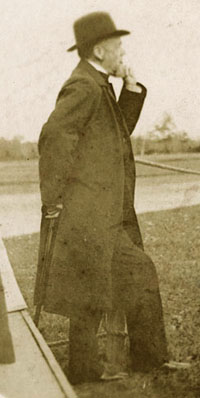
Henry Coit, taken around 1894.
The Chapel of St. Peter and St. Paul was the vision of the Reverend Dr. Henry Augustus Coit, First Rector of St. Paul’s School. Rev. Coit was here in Millville at the very beginning, to greet the first three students who attended St. Paul’s School, and he was instrumental in the growth and success of the School over the course of many decades. In the book, St. Paul’s: The Life of a New England School by August Heckscher (pg. 104), his concept for a new chapel, realized after twenty-five years of service as Rector, is outlined from his Anniversary sermon of 1881:
He foresaw a time when the number of boys in the school would have doubled, and the great wealth and progress of the times would have provided abundantly for their needs – comfortable lodgings, scientific apparatus, libraries and collections. And then the climax: “In my prophetic thought I enter with the great body of the school into a new and larger chapel.” The existing chapel, with its old ornaments and sacred things intact, formed in his vision an ante-chapel. “But the great throng passes through into a more glorious house of prayer.”
At the Anniversary celebration of 1882 the Alumni Association formed a committee to raise $100,000 for building a new chapel for St. Paul’s School. A sum that large (over 2.5 million of today’s dollars) had never been raised before at the School, and it was considered a daunting task. According to the May 27, 1886 Horae Scholasticae (pg. 146), the challenge was met, and funding was secured within four years:
April 3, 1886, was the actual date of the thirtieth anniversary of the School, and the committee in New York were gratified to be able to send to the Rector and Mrs. Coit on that day the announcement that the Chapel fund was completed.
With the funds now in place, the architect, Henry Vaughan, was hired to complete the design. Heckscher (pg. 105) describes Vaughan as:
… a high churchman, believing that English Gothic, with its roots in the fourteenth century prior to Henry VIII’s break with Rome, was the true style for the Anglican Church. In the course of a solitary, single-minded career he would design some fifty buildings embodying his architectural and religious ideals, mostly churches and school buildings throughout New England, where a design by Vaughan became the standard by which other structures were judged.
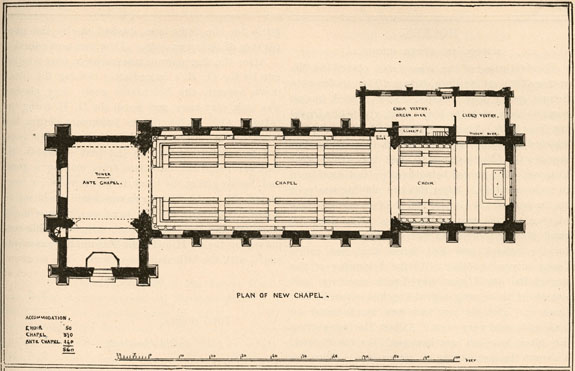
Vaughan’s original plan for the Chapel – note that the choir vestry and the clergy vestry were constructed on the opposite side as that shown above (Dec. 17, 1885 Horae Scholasticae, pg. 67).
In the book The Almighty Wall: The Architecture of Henry Vaughan (pg. 89), William Morgan looks at Vaughan’s celebrated career and affords the following distinction to Vaughan’s accomplishment of the Chapel of St. Peter and St. Paul:
While Vaughan’s appointment as architect of Washington Cathedral might be considered the climax of his career, the Chapel of Saint Peter and Saint Paul for St. Paul’s School begun twenty years earlier is Vaughan’s masterpiece. Had Vaughan died at, say, age fifty and had not lived to design many of his churches or Washington Cathedral, his place in the Gothic Revival in America would still be secure.
The selection below consists of some of the earliest photographs of the New Chapel, as it is more affectionately called, from the St. Paul’s School archives. In the 125 years that Vaughan’s masterpiece has served the community at St. Paul’s School the Chapel has undergone a number of additions and changes. All except the last photograph in the exhibit predate the completion of the tower in 1894, and provide interior and exterior views of the Chapel as it originally appeared, reflecting the vision of the architect and the dream of Dr. Coit.
Exhibit Quick Links:
(See full exhibit below)
Click on the thumbnails above or the titles below to access the individual catalog pages.
Exhibit Entries:
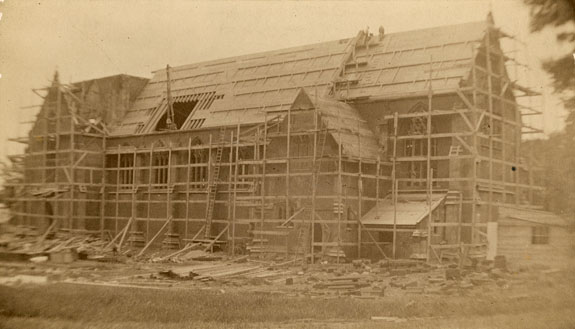
Construction began on the New Chapel in the summer of 1886, and the Chapel was consecrated on June 5, 1888. This photograph is not dated, but judging by the progress of the construction it appears to have been taken after May of 1887.
The Horae Scholasticae from October 6, 1886 (pg. 4) has this to say about the construction:
The actual work on the chapel was begun about the middle of July, and when the boys arrived in September the foundation had been laid, and the walls had already risen to quite a considerable height. . . At present the work is not progressing as rapidly as the committee would wish, owing to the difficulty, almost impossibility, of obtaining suitable workmen.
The Horae Scholasticae from December 4, 1886 (pg. 60) adds this detail:
The work on the Chapel has progressed slowly of late. The walls are up to the middle of the windows, and the arches of two of the chancel windows have been completed. Contrary to what was at first hoped, it will be impossible to have the building under cover before winter.
The Horae Scholasticae from May 26, 1887 (pg. 147) records this information:
The Chapel is now ready for the roof. The tower has reached the height of the main gable, and the traceries in the large windows, all of them beautiful specimens of stone-work, have been put in place. Preparatory work is being done on the frame-work of the roof, and all the external masonry is nearly finished.
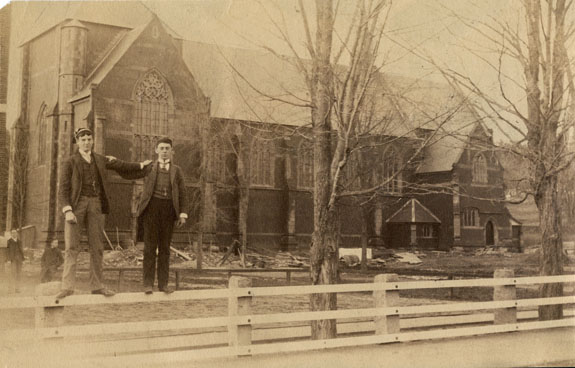
This photograph, originally part of an unknown album, features two students standing on the fence lining Rectory Road. The New Chapel is in the background, near completion, with piles of construction debris on the ground near the foundation. The two students are identified as “Emmet” and “Perkins”. The date has been cut, so we know the photograph was taken in November, but not the year. It most likely dates from November of 1887, since the roof itself wasn’t begun until after May of that year.
“Perkins” is Frederick Curtis Perkins, who attended St. Paul’s School from 1885 to 1890 and is a member of the Form of 1889. “Emmet” could be either Richard Stockton Emmet Jr., Form of 1888, or William Temple Emmet, Form of 1887.
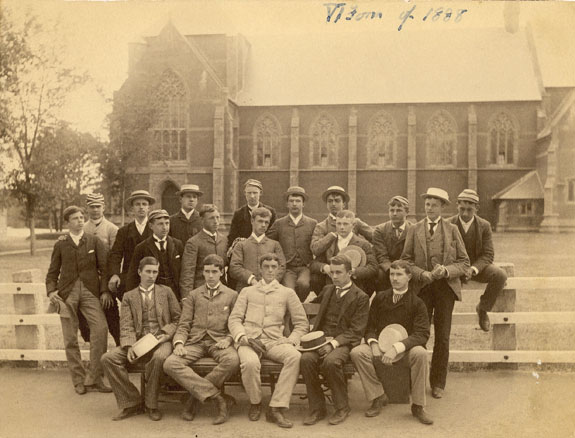
This photograph features the members of the Sixth Form of 1888, seated along the fence that lined Rectory Road, with the recently completed New Chapel in the background.
In the May 1941 issue of the Alumni Horae (pg. 13), Malcolm Kenneth Gordon, Form of 1887, wrote this:
In those days the boys went to college from the Fifth Form. A few were invited back for the Sixth Form, and sometimes a boy would take another year in the Upper Sixth. Instead of going to college in ’87, I came back for the Sixth Form year, at the end of which Dr. Coit asked me to return for another year, which I did, and then became a master.
The students shown in this photograph are counted as members of the Form of 1887 even though they stayed on for the 1888 Sixth Form year. The Horae Scholasticae from October 8, 1887 (pg. 23) provides this information about the Sixth Form of 1888:
There are 19 in the VI Form; 7 from last year’s V A, 6 from V B, and 6 from V Scientific. At a meeting of the form Gordon was elected president.
According to the inscription on the back, the photograph belonged to Malcolm Kenneth Gordon. He was a student at St. Paul’s School from 1882 – 1889 a member of the faculty from 1889 – 1917. He is standing in the middle row behind the second person from the left seated in the first row. He inscribed the back of the photo with this: “The last VI form to sit in Old Chapel The first VI form to sit in New Chapel.”
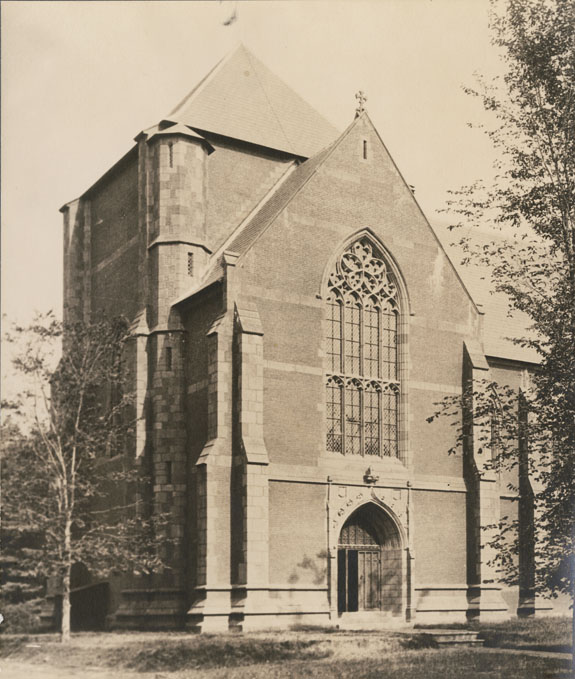
This photograph of the New Chapel entrance provides a good view of the capped roof prior to the addition of the tower which was completed 1894.
The Horae Scholasticae from November 4, 1887 (pg. 38) has this to say about the unfinished tower:
But the exterior, also, has great dignity and grace; and when the tower is built – and without the tower it is scarcely fair to pass judgment at all – we believe the exterior effect will be scarcely less pleasing than that of the interior. The tower is an integral part of the architect’s conception, and we are quite sure that the Alumni, as well as the School, will never be satisfied until it is erected and supplied with clock and bells.
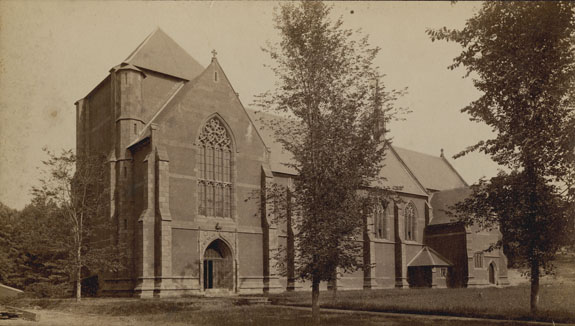
This photograph of the New Chapel was taken between 1888 and 1894, prior to the completion of the tower.
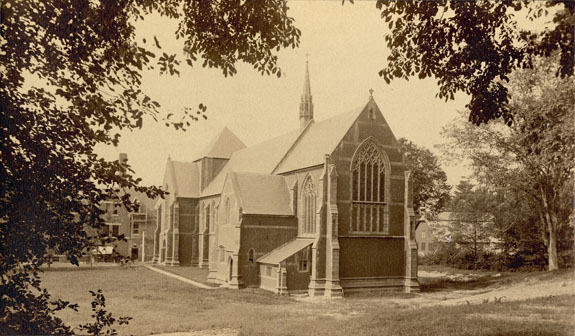
This view of the New Chapel, dated 1892, shows the sanctuary end of the chapel. This is the section of the chapel that was expanded in 1928. This view provides a good vantage point for comparison to the current layout, and how that change affected the overall appearance of the exterior design.
To the right of the Chapel the original Racquet Courts can be seen through the trees. To the left, a small section of the Big Study is also visible.
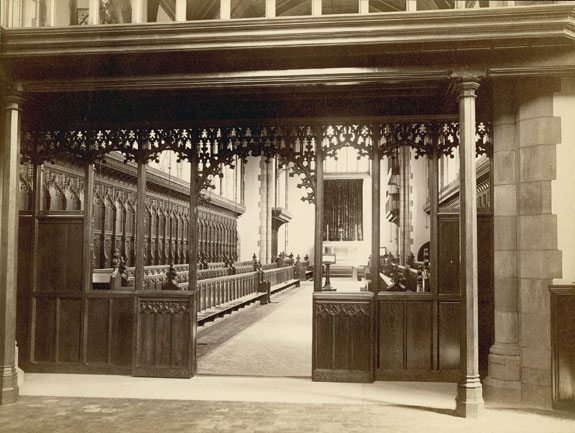
This photograph shows the antechapel as it was originally configured, prior to the addition of the west door in 1928.
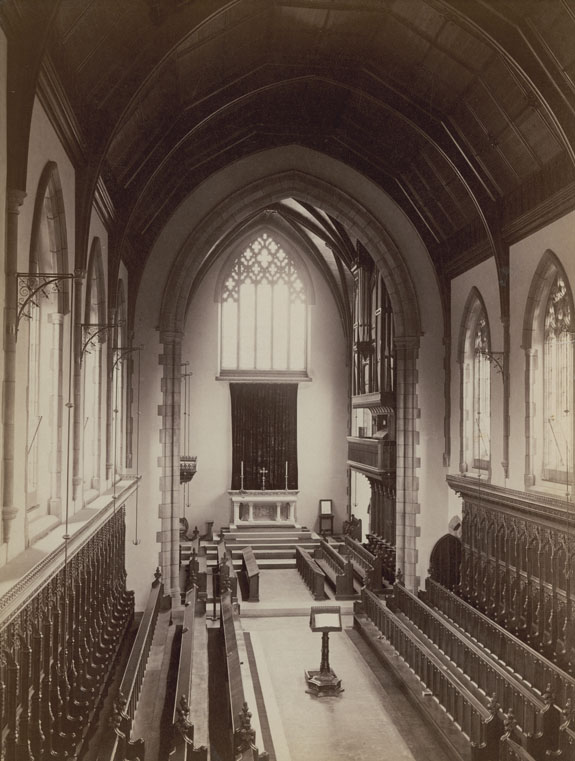
This photograph shows the New Chapel looking toward the chancel. This early interior view shows the sanctuary prior to the addition of the reredos in 1894, and the expansion of 1928.
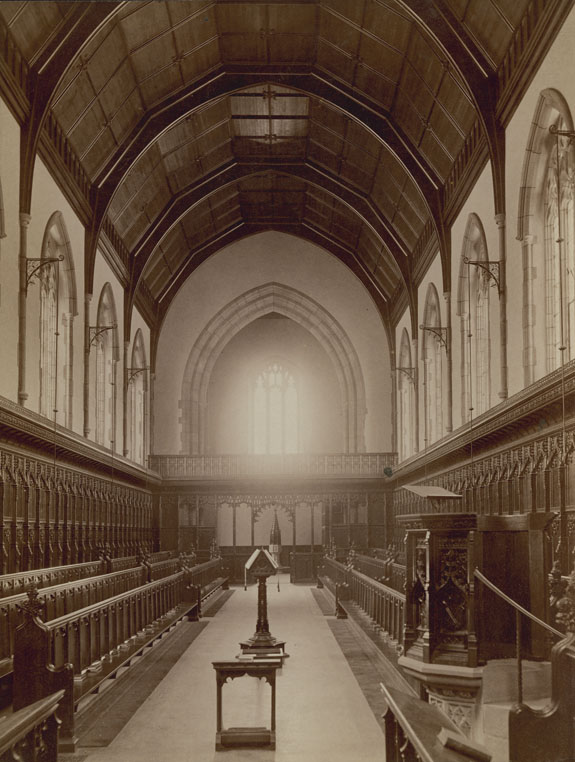
This photograph shows the New Chapel looking toward the choir. The section of the Chapel that leads up to the pulpit is traditionally called the choir, even though the actual choir itself sits in the area near the organ in the chancel.
This early interior view shows the Chapel prior to the addition of the west door in 1928, which is now located behind the baptismal font in this photograph. The large window in the center of the photograph has lightly tinted “cathedral glass” in it, letting in an abundance of light. The first of the stained glass windows in this section of the Chapel was installed in 1888 – the Nativity window located over the Rector’s stall. Only one stained glass window was in place at the time of the consecration, June 5, 1888, located over the organ console in the chancel.
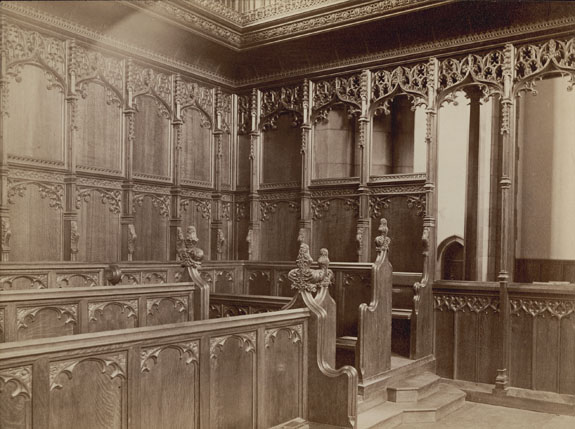
This photograph features the Rector’s stall located just inside the choir area of the Chapel and shows the stall armrest prior to the addition of the pelican carving done by J. Gregory Wiggins in the early 1930s.
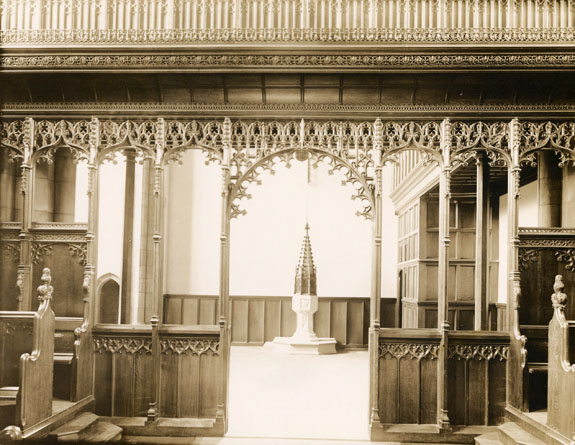
This early interior view shows the antechapel prior to the addition of the west door in 1928, which is now located behind the baptismal font in this photograph.
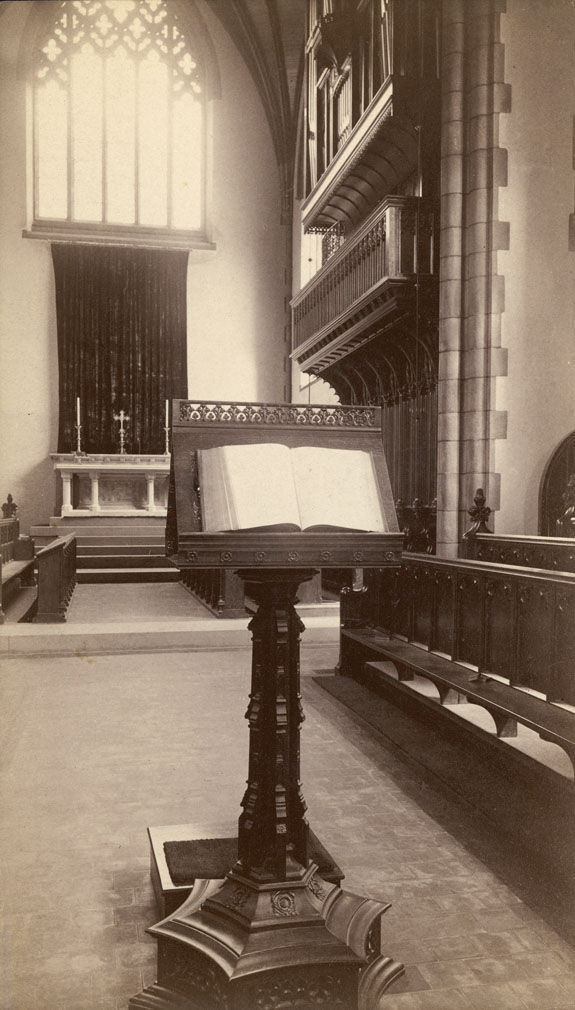
According to the School published pamphlet, The Chapel of Saint Peter and Saint Paul (pg.12):
The revolving lectern, with separate desks for Old and New Testaments, belongs to the original chapel.
Candlesticks were added to the sides of the lectern in 1922.
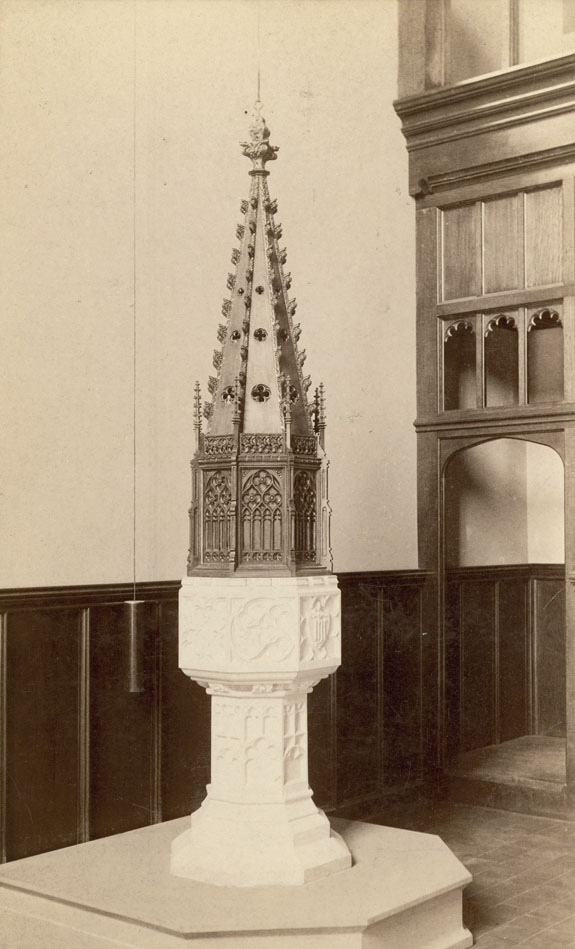
This photograph shows the baptismal font in its original position in the antechapel prior to the addition of the west door in 1928. Currently it is located in the chantry, between the two Alumni Clergy panels.
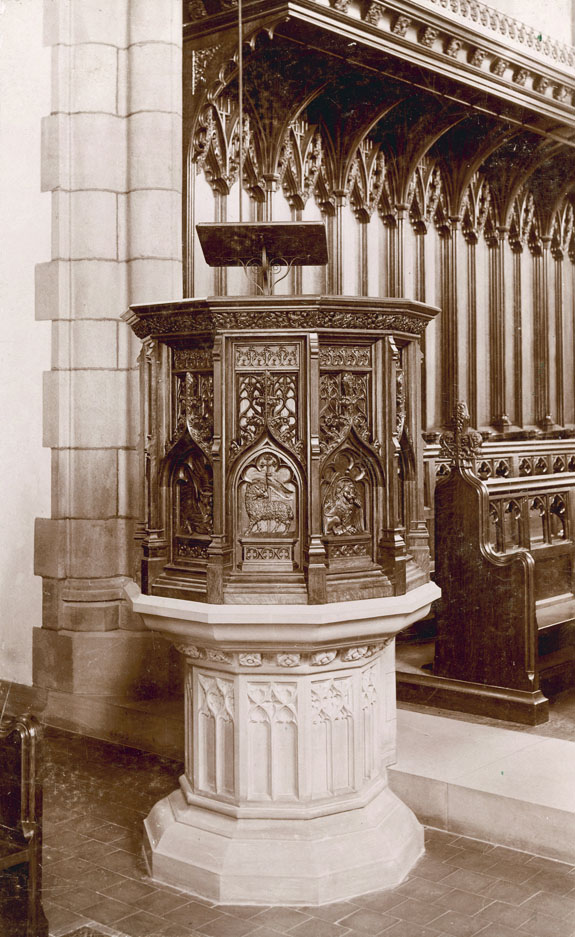
This pulpit was a gift of the Form of 1887. The Horae Scholasticae from December 17, 1887 (pg. 92) offered these thoughts on the Chapel furniture and appointments:
As years roll on, the many beautiful windows, the pulpit, the reading-desk, the font, and all the furniture of the building, will be memorials of the love of the men and boys who have borne and will bear the S. Paul’s of the past to the S. Paul’s of the future. If “architecture be frozen music,” as has been said, surely the memorials of those that have lived here and gone out from here to meet the world, will form the fittest poetry – the poetry of love and life – which could be made for that music.
The School publication The Chapel of Saint Peter and Saint Paul (pg. 14) includes this description of the pulpit:
The carved oak pulpit bears symbolic panels. Reading from the stair rail, these are: 1. Shield of St. Paul. 2. Pelican. 3. Eagle of St. John. 4. Bull of St. Luke. 5. Agnus Dei. 6. Lion of St. Mark. 7. Winged man of St. Matthew. 8. Shield combining symbols of St. Peter and St. Paul.
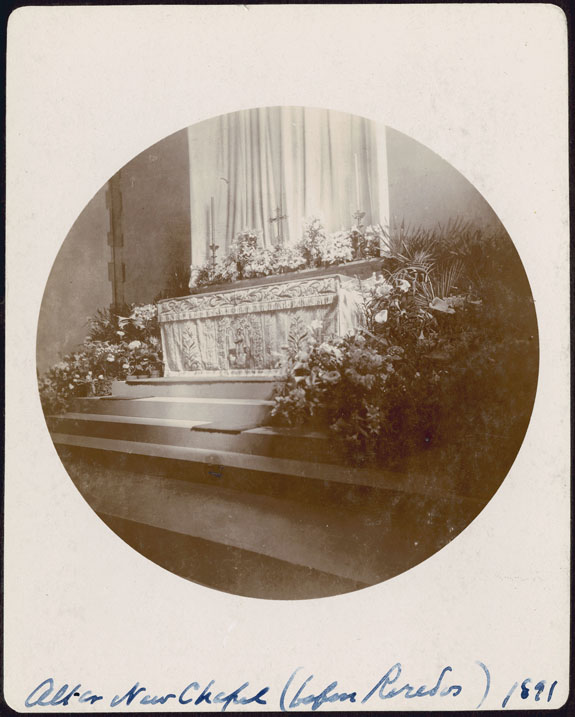
This photograph, taken in 1891, shows the altar in the New Chapel as it originally appeared, prior to the addition of the reredos in 1894.
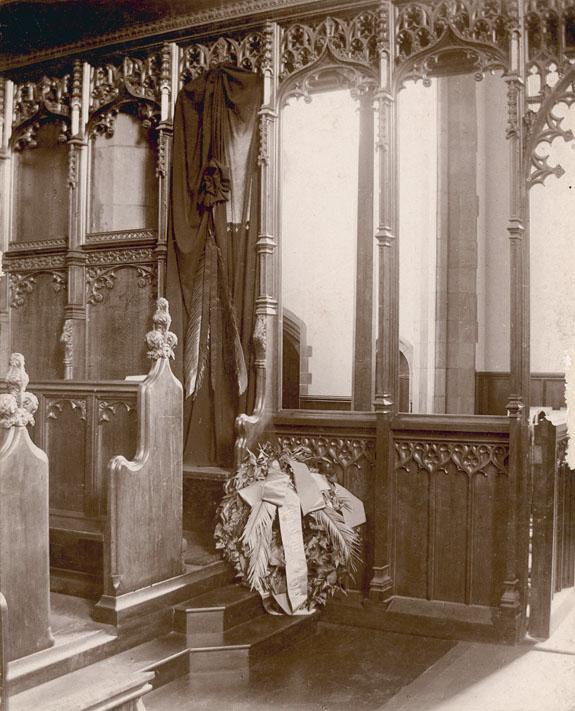
This photograph shows the Rector’s stall, draped in mourning for the First Rector, Henry Augustus Coit, who died on February 5th, 1895.
The angel window over the south door, the main entrance to the Chapel, was installed in 1896 as a memorial to him. According to the program for the 75th anniversary of the Chapel, published on October 21, 1962, Coit chose the theme himself “so that as the boys left the chapel they would be reminded that they were under the guardianship of creatures of a higher order in God’s Kingdom.”



